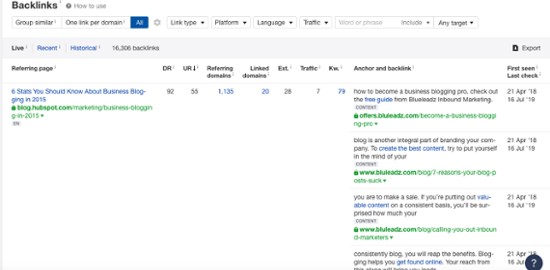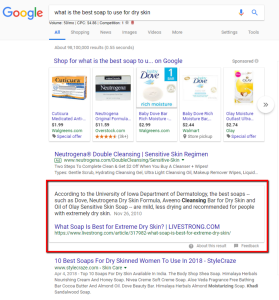When you’re tasked with building links, you need to have a good idea of what you’re starting with.
What’s the health of your current website? How did your previous link building tactics benefit your site? Where can you improve?
There are so many important questions you can ask. And fortunately, you can get the answers you need from your link profile.
What Is a Link Profile?
Every link you have pointing to your site has an impact on your search engine optimization (SEO) efforts. That makeup of all your inbound links is called your link profile.
Your link profile has a ripple effect on many aspects of website performance, including your ranking potential and your domain authority.
A strong link profile includes a variety of links from high authority sites. When you have a strong link profile, you’re setting yourself up for success with SEO.
And the best way to determine the health of your link profile is by conducting a link profile analysis.
The Link Profile Analysis: 7 Elements to Focus On
I know, this sounds really dry, but your link profile analysis can be so impactful and even fun to do!
It refers to how you assess and evaluate all the inbound links pointing to your site.
When you conduct a link profile analysis, you get a bird’s eye view of all the links pointing to you. You can judge the quality and health of your profile by looking at seven different aspects.
The Quantity of Links
Looking at how many links you’re earning is important because you get to look at critical components of your SEO strategy, including the following:
- How many links you generate in specified timeframes
- How fast you’re building backlinks in your campaign
- How you’re tracking toward link building goals
- How your strategy is being hurt by lost backlinks
- How many links are pointing to individual webpages
As every SEO expert and marketer knows, you want to earn high quality backlinks, but you also need to be strategic about it. Earning too many too quickly can raise suspicion, which could lead to a penalty.
Also, outside of quantity, you also need to consider quality. There are bad links out there, and you don’t want them, which is where disavowing can help.
The Linking Domain’s Authority
Generally speaking, the higher the DA of a linking site, the more valuable that link is. But that also doesn’t mean that links from lower DA sites is inherently bad.
After all, a mix of linking domains with various levels of authority is what makes a healthy, diverse link profile.
That being said, it’s important to pay more attention to those lower DA sites linking to you. You should assess the domain to determine if it’s too spammy.
If that’s the case, you should manually reach out to the domain to request a link removal. Bad links can significantly hurt your SEO efforts.
The Linking Domain’s Diversity
That first backlink from a domain carries a lot of link equity with it. But as you get more links from that same domain, the value of those subsequent links is less and less.
This is why you should assess how diverse your profile is. In a perfect world, you can generate more backlinks from new domains on an ongoing basis, adding more diversity to your profile.
But in many cases, you’re likely getting a lot of links from the same sources. This is signaling something important to you – it’s time to reach out to new domains.
The Relevance of the Linking Domain
Each link in your profile should be somewhat related to your company and website. Otherwise, why are they linking to you?
If they’re irrelevant, it’s likely a bad link that Google might consider to be spammy or part of a link scheme. Bottom line: You need links that come from domains that are relevant to you and the topics you cover on your site.
The Anchor Text
As you analyze your link profile, you can gather data on the anchor texts being used to link to you. There are few aspects of anchor text to consider:
- Branded anchor text – these are more valuable than other kinds of anchor text.
- Keyword anchor text – intentionally selected keywords help improve search query relevance.
- Relevant anchor text – the anchor text should be semantically relevant to the post being linked to and the post it’s included in.
- Diverse anchor text – using synonyms helps prevent penalties, which can occur if you use the same exact text over and over.
The Diversity of Linking Destinations
No matter your goals, like building links for targeted webpages like landing pages, you should always strive to generate links to several other pages.
When you have backlinks pointing to various destinations, your profile appears more natural to search engines, which makes your domain more favorable and authoritative. It’s important to always create new content so you have new pages to earn links for.
The History of Your Links
Looking at the history of your inbound links clues you in on whether or not links are being removed at a fast pace. This indicates that those linking to you might not want to give their votes of confidence in your content anymore, which is a major problem.
You want links to last for years, and you want to see a steady increase in backlinks over time. You need a strategy that provides a consistent flow of new inbound links, and the history can be a great resource for tracking and monitoring your goals.
How to Conduct a Link Profile Analysis
There are so many incredible SEO tools that make link profile analysis easy. Our favorites are Moz and Ahrefs.
Link Profile Analysis on Moz
Moz Pro offers an impressive list of tools, including Link Explorer. You can find your link profile in a few simple steps.
1. Log into your Moz Pro account.
2. Go to Link Research on the left sidebar.
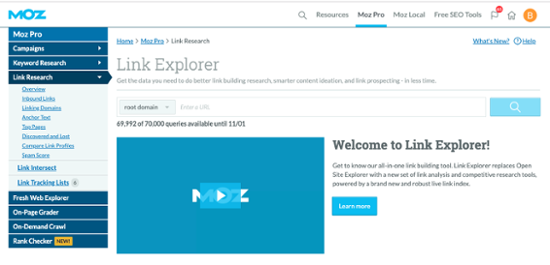
3. Select Inbound Links, then enter your domain.
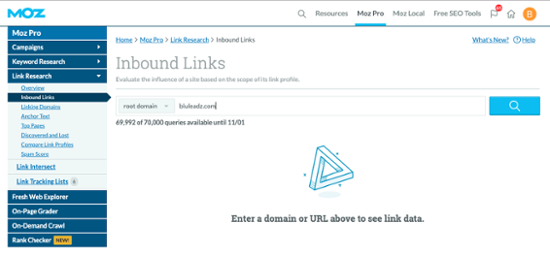
This is where you will see your domain authority, page authority, number of linking domains, and inbound links.
From here, you can select Linking Domains to assess who is linking to you.
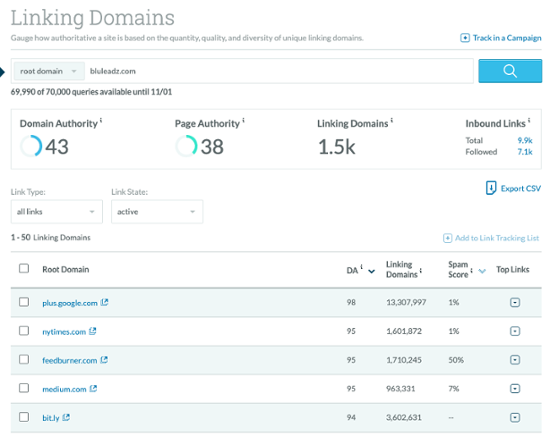
Click the Top Links dropdown on a listed domain to see how what pages from that root domain are linking to you.
You can also access a full list of webpages linking to you simply by clicking the total number of inbound links in the top right.
This shows you anchor text and other relevant information about each linking webpage.
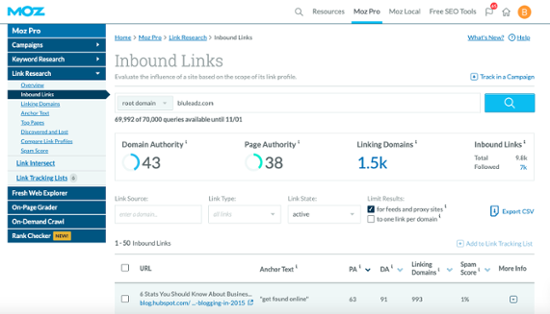
The spam score is especially cool because it shows the percentage of sites with similar features that have been penalized by Google. You can click the More Info dropdown to see when the link was first found by Moz, the webpage where the link points to, and the date the link was lost.
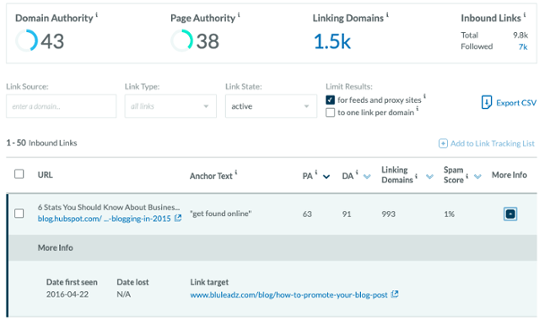
Link Profile Analysis on Ahrefs
One of the best tools in the SEO world, Ahrefs offers a robust suite of tools. Follow these steps to conduct a link profile analysis.
1. Log into Ahrefs.
2. Enter your domain into Site Explorer.
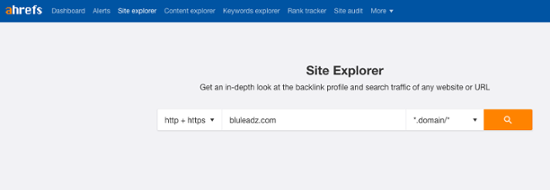
3. Review your dashboard, which shows you your domain rating, number of backlinks and referring domains, organic keywords, and more.
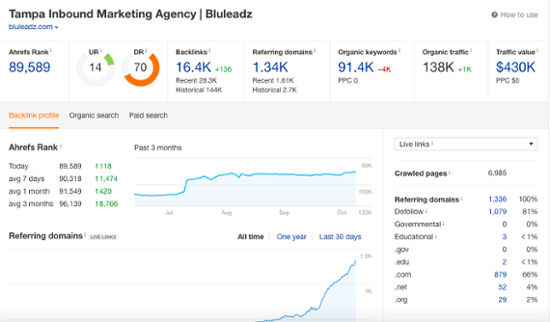
As you scroll through your backlink profile dashboard, you get a good bird’s eye view of the history of your website and the performance of your link building efforts.
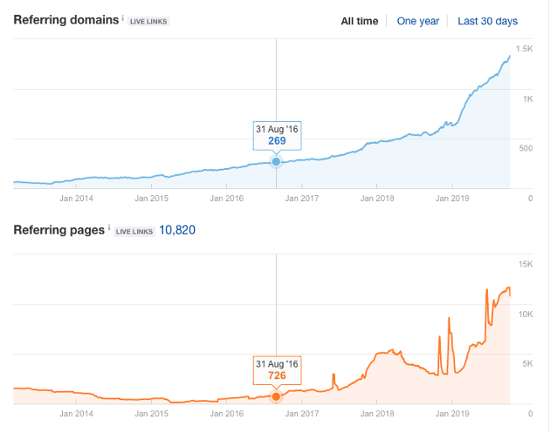
You can hover your mouse over timeframes to track changes. These graphs are especially helpful because you can hone in on big changes to identify causes for spikes in referring domains and pages.
You can also see how many referring domains and backlinks you gained and lost over time.
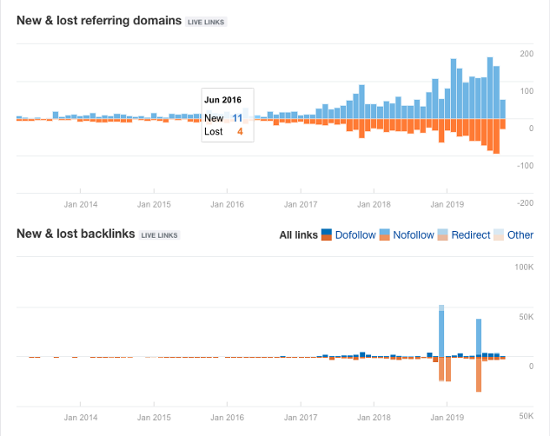
4. To manually review your entire link profile, click on the number of backlinks at the top of the dashboard. Similar to Moz, you can see the anchor text, the domain authority of the linking domain, and a lot of other helpful data.
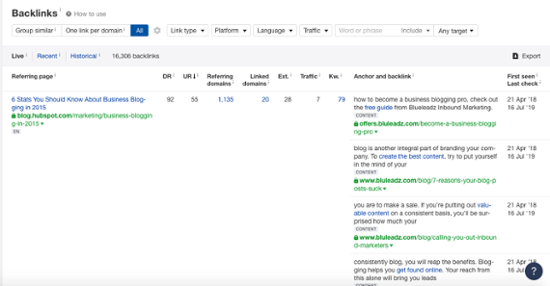
You can also see live backlinks, recently acquired backlinks, and a historical view, which shows all the links you currently have and the ones you’ve lost.
You have plenty of filter options to better manage these reports and prioritize what needs your attention the most.
Keep Your Link Profile Healthy and Thriving
When you have the right tools at your disposal, you can conduct a thorough link profile analysis and gather key insights on your link building efforts. Then, you can keep your fingers on the pulse of your link profile on a continuous basis.
By building and maintaining a healthy link profile, you will see huge SEO gains in no time.
Digital & Social Articles on Business 2 Community
(32)
